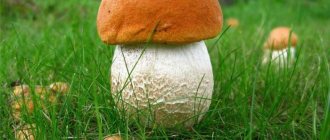Abstract of the educational activity “My Hometown”, in the second junior group.
Abstract of the educational activity “My Hometown”, in the second junior group.
Authors:
Evteeva M.V.
teacher MBDOU kindergarten No. 148 group “Squirrels”, Voronezh Purpose of the work:
this summary is intended for preschool teachers, teachers of additional education
Integration of educational areas:
Social-communicative, cognitive, speech, artistic-aesthetic, physical development.
Goal: Formation of an elementary understanding of pupils about their small Motherland - the city of Voronezh and their family. Objectives:
1. To form patriotic feelings.
2. Introduce the sights of the city. 3. Activate children's vocabulary by deepening knowledge about their family. 4. Develop visual perception, attention, memory, thinking. 5. Develop verbal communication skills, the ability to perceive read text by ear. 6. Develop creativity and imagination. 7. Improve phonemic awareness. 8. Improve the ability to create a collective composition through application. 9. Foster patriotism and love for the Motherland. Equipment:
Sound recording “Anthem of Voronezh”, newspaper, glue, photographs of city buildings, brushes, napkins for each child, a ball of thread.
Progress of the lesson.
The teacher draws the children’s attention to the “magic ball” lying on the floor.
Educator.
- Look what an unusual guest.
This ball is not simple, but magical. I propose to take this ball in your hands and pass it to each other, saying your first and last name. With the help of a ball we can convey a good mood to each other. Game "Let's get to know each other."
Educator
- Children, each of you says your first and last name.
-Who gave you your first and last name? (Answers: parents, mom, dad) -When did your parents give them to you? (Answers: when they were born) Educator
- Correct.
Every person has a birthday, and what else can have a birthday? (Answers: near books, cars, cities, towns) Educator
- Correct.
A book, a toy, a house, a village, even an entire city has its own birthday. They, like people, are given “names”. Educator
- Every person has a homeland - the country where he lives.
What is the name of our country? (Answers: Russia) -What are the people of our country called? (Russians) Educator
- Our country is the largest in the world.
There are many cities, rivers, lakes, seas, mountains and plains in it. But for every person, the place where he was born, goes to kindergarten, school, works and lives is closer and dearer. This is his small homeland. Children, do you know what name our small homeland has? (Yes) Listen to the song about our small homeland. (the song “Anthem of Voronezh” is played) Educator
- Let’s try to name the words from this song that were most often found in this text.
(fortress city, shield of Russia, Voronezh) Educator
- Well done.
So what is the name of our city? (Voronezh) Educator
- We have many different buildings in our city, I will ask you riddles, and you try to guess them.
There are doctors in this house. They are waiting for people to treat them. They are ready to help everyone - They release only those who are healthy. (hospital)
There is a cheerful, bright house. There are a lot of agile guys there. There they write and count, draw and read. (school)
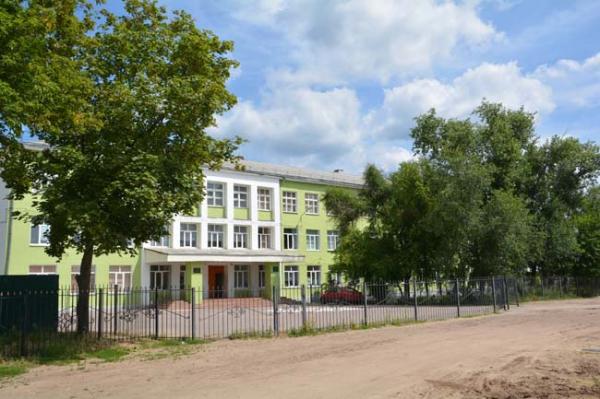
What kind of wonderful house is this? There are a hundred children in that house. The house is very happy for the children. What is this?... (kindergarten)
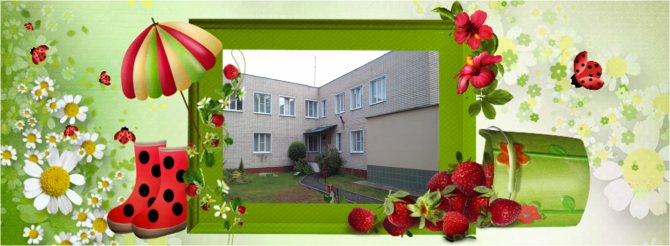
Trains are noisy everywhere, and people are going everywhere. From all sides, from all ends, Who are waiting for the trains to arrive. We invite him to the hall, What is called... (station)
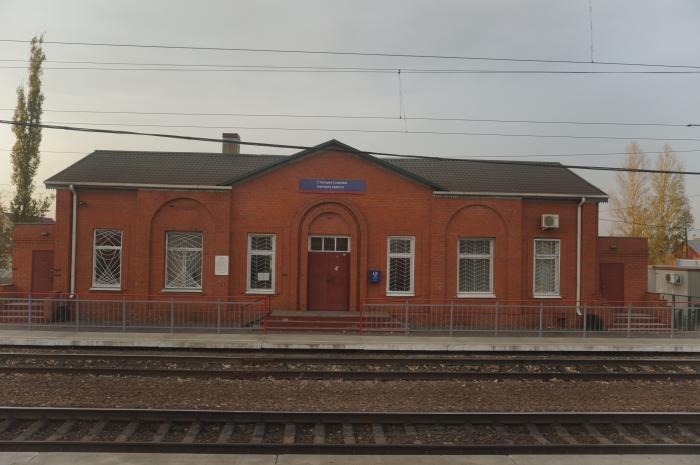
If the refrigerator is empty, the food has run out. Come here quickly. And take a basket, Buy what tastes better. In our... (store)
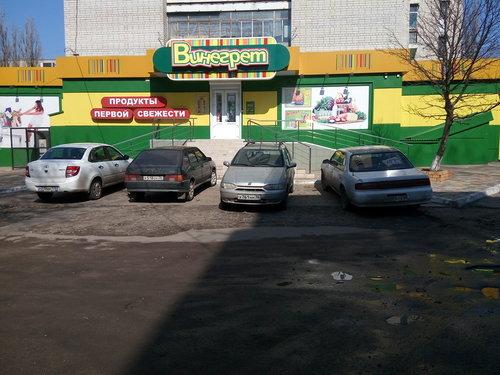
Educator
- Well done.
All the riddles were solved. Do you want to know what else we have in our city? (Yes) Educator
- Then stand in a circle and repeat after me.
Physical exercise “We are walking through the streets.” We are walking around the city. We call what we see. (Walk in a circle.) Traffic lights and cars, (Turn their heads to the right.) Schools and shops, (Turn their heads to the left.) Squares, streets, bridges. (They wave first with their right hand, then with their left.) And trees and bushes! (Raise their hands up and lower them.)
So you and I walked through the streets of our city. Educator - What great fellows you are, you know so much about your city. I really want to tell your parents that you also know about our city. Please help me make a newspaper for them. You have photographs, paper, and glue here. Do you agree? (Yes) Educator - Then let’s get to work. Children perform the collective work “Our City”. Educator - Thank you guys.
It turned out great. Just remind me, please, what interesting things there are in our city? Children comment on the photographs on the newspaper (we put the newspaper with the children in the parent's corner).
Project “My Hometown”
Went to Childhood - an everyday discovery of the world and therefore it is necessary to make sure that it becomes, first of all, knowledge of man and the Fatherland, their beauty and greatness (V.A. Sukhomlinsky)
In this huge world, everyone has their own small homeland, and we carry a piece of it in our hearts throughout life. To instill patriotic feelings in a child means to cultivate affection and love for his small Motherland. And if we want our children to love their country, we need to do a lot to make them love the place where they were born and live. To arouse interest in the hometown, it is necessary to select material that would be accessible to the child’s perception and leave vivid impressions. These can be images of nature, social events, traditions, the work of loved ones. The knowledge gained about their hometown will contribute to the development in preschoolers of such feelings as affection and love for their native land. I would like our children’s childhood impressions to become the source of love for their hometown and the people living in it. The project “My Hometown” was developed for the 70th anniversary of the city of Vorkuta. Vorkuta is a city with a difficult fate, harsh climatic conditions, fragile northern nature, sights included in the world cultural heritage, strong and talented people. This project has become effective in developing a systematic approach to nurturing love for their hometown in older preschool children. The project is based on personality-oriented interaction, integration of means, methods and various types of children's activities. To include children in the project, a motivation was proposed - to create a mini museum of the city in our group.
Passport of the pedagogical project “My Hometown”
Content.
Theme: “My hometown.” Creating conditions for developing interest in your hometown.
Addressing the project: children and parents of the senior group. Author of the project: teacher of the senior group Bashkirova E.I. Project participants: teachers, children and parents of the senior group. Age of pupils: 5 – 6 years. Features of the project: by the nature of the result created, this is a practice-oriented project. In terms of the number of creators, it is collective (children, families of pupils). The project is short-term 1 month. Project goal: To form ideas about your hometown. Project objectives: For children: • To form an idea of the importance of our city for the country. • Systematize knowledge about the names of streets and squares, city attractions. • Continue to form an understanding of the work of a miner. • Arouse feelings of admiration for the beauty of your hometown. • Foster a sense of pride in your city and your region. • Activate and expand the vocabulary of preschoolers. For parents: • Joint search for information on the topic in literature and Internet sources. • Promote the opportunity to implement joint ideas and take initiative.
Project resources: Illustrations and photographs of the streets of my hometown, presentation “My Native Land,” excursions along Moskovskaya Street, to the Miners’ Palace of Culture, didactic games to consolidate ideas about my hometown. Proposed project products: Creation of a mini-museum “My Vorkuta”.
Stages of work on the project Working with teachers Interaction with children Interaction with families. 1 — Stage – immersion in the project. 1. Selecting a topic. 2. Identification of the problem. 3. Studying methodological literature on local history. Conversation “The birthday of our city” (clarification of children’s ideas about their hometown). Questioning parents “What do you know about your native Vorkuta?” Providing assistance in organizing a subject-specific development environment on the topic.
Stage 2 – organization of activities. 1. Collection and systematization of materials. 2. Selection of games and equipment In honor of the birth of the city, we will create a Vorkuta museum in the group. Three questions technique. Consultations for parents: “Streets of our city”; "Famous people of Vorkuta."
Stage 3 implementation of activities. Preparation of material for didactic games, development of long-term planning on the topic. Offer to look at a map of the Komi Republic, show the location of the city of Vorkuta, note that the city is located in the Arctic Circle.
View the presentation “My native land.”
Conversations: “Flag, coat of arms of the city of Vorkuta.” “What makes our city famous.” “The most beautiful places in our city” (architectural monuments). “On the names of the streets of my native city.” “Miner is the main profession of Vorkuta.” “What I like about Vorkuta.”
Direct educational activities. Topic: “Natural minerals of the earth - coal.” (To form an idea of the natural resources of the earth, to develop cognitive interest.)
Topic: “Come to our city.” (Continue to teach children to compose descriptive stories from memory, improve monologue speech skills.) Drawing “Vorkuta city in the evening.” Continue to form an idea of the architecture of my native city of Vorkuta. Learn to convey in a drawing the image of an evening city - the houses are brighter than the sky, multi-colored lights are burning in the windows. Develop a sense of composition and color. Application. "Fountain in our city." Expand children's understanding of the architecture of our city. Learn to convey the symmetrical structure of our fountain in work, supplementing it with the necessary details. Develop creative imagination. Teamwork collage. "My city in the future." Continue to develop the ability to work with different art materials, the ability to work together, and develop imagination.
Excursion along Moskovskaya street, to the children's school. Problem situation - You mixed up the number of a bus or minibus and ended up in an unfamiliar place. How will you find the way?
Didactic games: “What a miner needs to work.” “Collect the coat of arms of Vorkuta.” "Guide". “Collect views of our city from cut-out pictures.” "Guess where I am."
Outdoor games "Stop the Deer". "The Cat and the Sparrow." Fiction: - Reading poems about Vorkuta and the Komi Region. — Telling Komi legends about Kortayk, Shipich, Yurka with illustrations. — Komi folk tale “Pera the Hero.” — Reading “Tales of Grandma Solomonia” by S. Pylaeva. — Reading Emelyanova N. “Oksya the hard worker.” Plot-role-playing game “Trip around the city” Providing assistance in the selection of materials for creating a mini museum.
Preparation of materials for the mini-museum. (Photos of favorite places in the city, a snowy town from different years, reindeer sled competitions, Vorkuta souvenirs, items belonging to the miner’s profession.)
Stage 4 – final. Long-term planning on the topic “Happy Birthday, Vorkuta.” Opening of the mini museum “Trip around the city “My Vorkuta”. Visit to the group's mini museum.
List of used literature:
Preschool education 20011/11 p.103 “Favorite City” I. Khasapetyan.
Child in kindergarten 2005/05 p. 38 “Moral patriotic education” E.G. Mikhailova.
Preschool education 2012/1 p. 83 “Vyselki - my native land” by N. Pestov.
Detailed long-term planning for the “Childhood” program. Authors – compilers E.A. Martynova, I.M. Suchkova // Uchitel Publishing House, Volgograd.
Preschool pedagogy 2002/3 p23 “Our city Lomonosov” M.V. Tikhonov.
https://www.komiinform.ru/news/63012/.
https://www.portal-slovo.ru/pre_school_education/36432.php.
https://nsportal.ru/detskii-sad/vospitatelnaya-rabota/2014/02/08/pedsovet-patrioticheskoe-vospitanie-doshkolnikov.
https://festival.1september.ru/articles/574763/.
“Vorkuta collection of poems about Vorkuta” V. Gerun.
Application
To the city of Vorkuta! Vladimir Gerun To the city of Vorkuta!
I love this beautiful city, On the ring among the bright roads It stands proud and clear And, like the north, it is solemn and strict.
My dear land, the Ural Mountains, you stand guard over miracles, I love the blue expanses, Vorkuta and our low forest.
This tundra is beautiful in color, When cloudberries bloom in summer and pansies in a bouquet, Ivan tea grows here like lilacs.
For two months there is greenery, expanse The sun goes around in circles all day, There are no nights and such freedom, I walk with chamomile all day!
This is a sea of beautiful daisies, Like these fields of poppies in the Crimea, I am proud of my beloved miners, I am proud of you Vorkuta!
White powder
White powder was covered with snow, White snow covered the ground again. It sprinkles white, white silver on top, Everything has become wonderful outside my window.
And the canvas lies quietly on the river, Silver glides like a light, white ribbon. The shores are covered with white milk, The fresh breeze burns the soul.
The mine on the hill sleeps, covered in darkness, The shores are covered with a white veil. It pours white on top, as if from a bucket, And the city of Vorkuta shines from the tundra!

